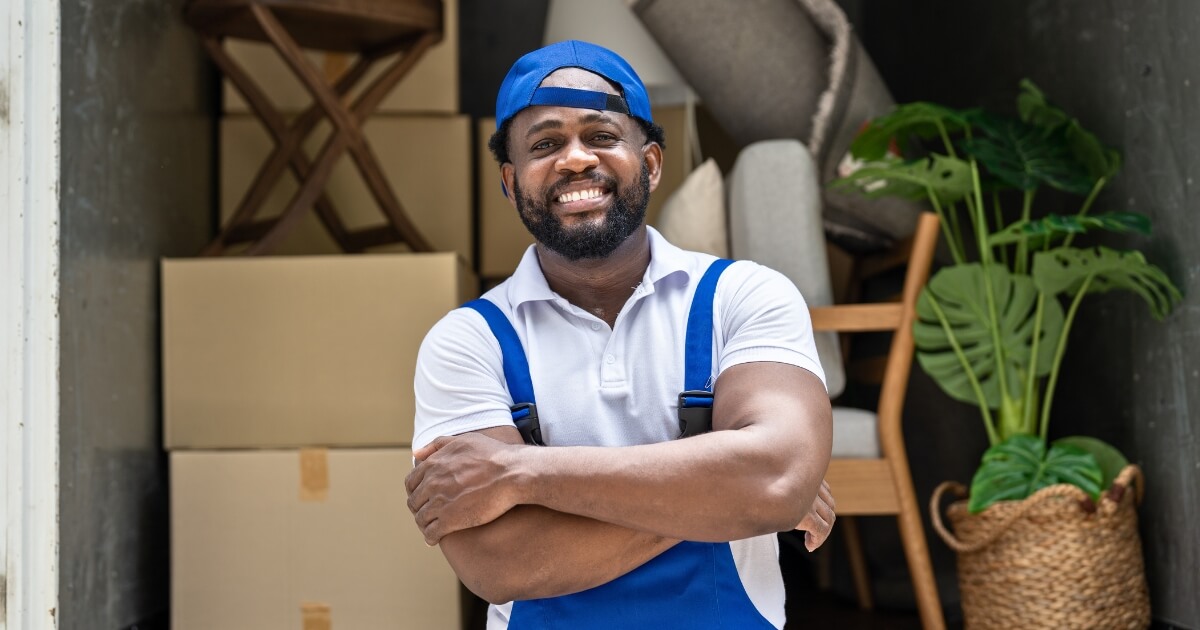Where to start packing for a move: Your complete guide
Moving house can feel overwhelming, especially when you're staring at years of accumulated belongings, wondering to yourself, “Where should I start packing for our move?” The good news is that, with the right approach and a solid plan, you can tackle your packing systematically and efficiently. Whether you're moving across town or across the country, knowing where to begin will save you time, stress, and potentially money on your removal costs.
Create your packing timeline
The key to successful packing lies in starting early and working methodically. Begin planning your packing strategy at least 6-8 weeks before your moving date. This timeline allows you to pack gradually without the last-minute rush that often leads to damaged items or forgotten belongings and worse still, chaos for you.
Before getting too involved in packing your possessions, though, remember to book your interstate furniture removals service to ensure that you have a date locked in for your move. The greater the notice that you can give your furniture removalist, the better, so that you can be assured of your choice of dates.
And so to begin, start by creating a room-by-room inventory of your home. Walk through each space and note items that require special handling, things you'll need right up until moving day, and belongings you can pack well in advance. This assessment will help you prioritise which rooms to tackle first.
Begin with the least essential items
When deciding where to start packing for a move, focus on items you won't need in the coming weeks:
- Seasonal clothing
- Books
- Artwork
- Children’s toys that are less used
- Decorations used at Christmas or Easter
- Other decorative items
These are perfect starting points as they can be packed early without disrupting your daily routine.
Storage areas like your garage or shed, a spare room, wardrobes that often contain items that haven't been used recently and similar storage areas, are ideal candidates for early packing.
Don’t forget the linen that you know won’t be needed in the short term. As you sort through these spaces, take the opportunity to declutter. Donate or sell items you no longer need, or if warranted, send them to recyclers or the dump – this will reduce your packing workload and moving costs.
Gather your packing supplies

Before you begin packing in earnest, ensure you have adequate supplies. You'll need various box sizes, packing paper, bubble wrap, packing tape, and permanent markers for labelling. Don't forget specialty boxes for items like mirrors, artwork, or wardrobe boxes for hanging clothes. You can find that some good quality used moving supplies can be obtained through online marketplace sites, saving you dollars and time.
Many removalist companies offer packing supplies as part of their services, which can be convenient and ensure you're using appropriate materials. Quality packing materials are an investment in protecting your belongings during the move.
Room-by-room packing strategy
Once you've tackled storage areas and seasonal items, move on to rooms you use less frequently. Guest bedrooms, formal dining rooms, and home offices (excluding daily-use items) are good next steps.
Pack one room at a time to maintain organisation and avoid mixing items from different areas. Label each box clearly with its contents and destination room. This labelling system will be invaluable when unpacking in your new home.
For frequently used rooms like kitchens and main bedrooms, pack non-essential items first. In the kitchen, start with specialty appliances, extra dishes, and cookbooks. In bedrooms, pack out-of-season clothing and extra linens while keeping daily essentials accessible.
Keep in mind that you don’t want to be walking around your packed items for weeks, so search out an area where you can stack your packed items well out of the way. Don’t stack breakables up high or where they can be knocked or crushed under the weight of other boxes.
Essential items to pack last
Some items should remain unpacked until the final days before your move. These include:
- Daily medications and toiletries
- A few days' worth of clothing for each family member
- Essential kitchen items for basic meal preparation
- Important documents and valuables
- Phone chargers and basic electronics
- Cleaning supplies and implements for final house preparation
- Items needed for children's routines
Consider packing a "first day" box for each person in the household containing immediate necessities. This might include toilet paper, basic tools, snacks, and items needed to make your first night comfortable.
Check out our moving house checklist as a helpful tool in organising your move.
Professional Packing Services

While DIY packing works well for many families, professional packing services offered by interstate furniture removals companies can be worthwhile for valuable items, complex moves, or when time is limited. Professional packers have the expertise and materials to ensure fragile items are properly protected.
If you're using professional packers for some items while packing others yourself, communicate clearly about which items you'll handle and which they should pack. This prevents confusion on moving day.
Final Packing Tips
Label boxes on multiple sides and keep an inventory list of box contents. Take photos of valuable items before packing them for insurance purposes. Pack heavy items in smaller boxes to prevent back injury and damage to the contents.
Remember that knowing where to start packing for a move is just the beginning. Stay organised, pace yourself, and don't hesitate to ask friends, family, or professional interstate furniture removals services for help when needed. With proper planning and execution, your packing process can be manageable and even satisfying as you prepare for this exciting new chapter in your life.
Moving doesn't have to be stressful when you approach packing strategically. By starting with the right items and maintaining good organisation throughout the process, you'll arrive at your new home with everything intact and be ready to create new memories.
Happy Moving!

